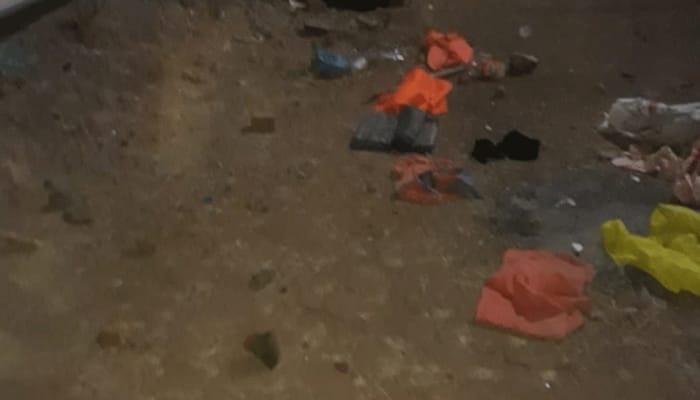Palghar Lynching: Saffronisation of Tribal Areas and Islamophobia Behind the Curtain

Image Courtesy: IANS
“We have recently received the confidential information that 500 Muslims with coronavirus in India have been let loose. They are going to cities and villages as beggars, butchers and vegetable vendors. Their targets are Buddhists, Sikhs, and Hindus.”
This is one of the messages being circulated on a number of WhatsApp groups of Palghar days before two sadhus and their driver were lynched to death on the night of 16 April. The other message that had been incessantly forwarded asked people to be aware of “Muslim-looking child kidnappers”.
Maharashtra’s Crime Investigation Department (CID) team, which is investigating the case, has filed a 5000-page chargesheet in which they examined mobile phones of the people they have arrested so far to analyse the kind of rumour-mongering that transpired before the incident. The WhatsApp groups of many of the arrested people received above-mentioned messages, again and again, followed by repeated discussions around them. It led to considerable panic, which caused the incident, the investigation has found.
Two sadhus, Kalpavruksha Giri, 70, Sushilgiri Maharaj, 35, and their driver Nilesh Yelgade, 30, were assaulted in Gadchinchle village located in Dahanu Taluka – 140 kilometres north of Mumbai – while they were on their way to Surat from Mumbai. The sadhus did not have necessary permits to travel during the nationwide lockdown announced on March 24 and had taken the interior route to avoid being frisked at the police checkposts on the highway. But a forest guard stopped their car near Gadchinchle, which lies on the border Maharashtra shares with Dadara and Nagar Haveli. While negotiating with the guard, a mob of 400 assaulted them and lynched them to death.
After the CID submitted the chargesheets in the court, state Home Minister Anil Deshmukh said, “The entire incident happened because of child-kidnapping rumours. Sadly, at the time of the incident, some political parties tried to give it communal colour.”
However, the rumours were steeped in Islamophobia. For four-five days before the incident, WhatsApp groups had been buzzing with messages like, “Beware friends, they look like Muslims. They are well-built and tall. They sneak in from the windows and take away little kids from the house.”
The messages, warning people to remain vigilant of Muslims in disguise, concluded with, “If you are a true Hindustani, forward it to as many people as possible. Har Har Mahadev. Jai Hind. Jai Bharat.”
A night before the incident, a WhatsApp group received a message that said the thieves are hiding in surrounding forests, when one of them said, “Don’t leave them alive if you find them.”
Since the village of Gadchinchle is on the border of Dadara and Nagar Haveli, some of the messages had also been going around in Gujarati. On April 15, a message in one of the WhatsApp groups said, “Two buses full of thieves have entered Khanvel. Stay safe.”
These messages repeatedly popped up in the WhatsApp groups, indicative of the panic spread in the area. A couple of days before the incident, a well-known doctor had also been attacked over these rumours.
The administration had issued warnings not to trust rumours, and also requested boys to not play cricket, and people to avoid selling toddy or play cards. Basically, anything that would end up being a large gathering.
However, when two sadhus – not known in the area – were seen in the village in the late hours of the day, panic took over.
The police have so far arrested 156 people, including 10 minors. The arrested hail from different hamlets of three villages – including a village from the Union Territory of Dadara and Nagar Haveli.
The chargesheet mentions the phone records of some of the arrested, which shows they made several calls on the night, and at the time of the incident. Further analysis shows that many of the numbers called were present at the spot where the lynching happened, which indicates how the mob continued to grow.
All of those arrested are Adivasis – working as farmers and labourers. None are Muslims—as some of the Right-wingers had suggested—initially after the incident.
Also read: How Draft EIA Notification Compromises Rights of Tribal and Forest Dwelling Communities
Carved out of Thane in 2014, Palghar, with a population of nearly 30 lakh, is a predominantly tribal district with 37% Scheduled Tribe population, much higher than Maharashtra’s 9.4%. In Dahanu taluka, where Gadchinchle is located, almost 70% of the population comprises Adivasis.
That tribal belt has been a stronghold of the Left ever since India’s independence. Godavari Parulekar, member of the CPM, and Maharashtra’s first woman law graduate, had led the Warli tribes’ movement against the British. After Independence, she led the Samyukta Maharashtra Movement in Thane until the state of Maharashtra was formed in 1960.
But after the formation of the Janata Party government in 1977 at the Centre, the RSS came up with Vanvasi Kalyan Ashrams in the tribal areas to propagate their views, said Kapil Patil, a native of Palghar, and the member of the Maharashtra legislative council. “The Islamophobic messages ahead of the mob lynching in Gadchinchle are symptomatic of the slow saffronisation that has been happening in Adivasi areas,” he said. “It is an old project. And it is similar to the missionary style of conversion.”
The presence of Christian missionaries in tribal areas was enough for the Vanvasi Kalyan Ashram to project themselves as the saviours of tribal communities in India. In Palghar, said Ramakant Patil, a senior journalist based in the district, there are independent Adivasi organisations with good networks that resist saffronisation. “Politically speaking, the communists have a significant presence in the district as well,” he said. “So, the Right-wing propaganda is limited.”
The limitations are visible from the 2019 Assembly elections of Maharashtra, where out of the six Assembly constituencies in Palghar’s Lok Sabha seat, none went to the BJP. The Lok Sabha seat, though, went to Shiv Sena’s Rajendra Gavit. Shiv Sena had contested the Lok Sabha elections in alliance with the BJP.
Regardless of the political dividends, the attempted social engineering to bring Adivasis into the Hindu fold is going on for a while, said Ramakant Patil. “Every year, they come up with the number of Ganesh idols they managed to install in Adivasi areas,” he said. “In some of the areas, you would see Navratri festival and Janmashtami being sporadically organised as well. This has never been part of their culture.”
Barkya Mangat, a tribal leader and CPM’s district secretary, said the Adivasis do not have a religion. “The concept of god is deeply entrenched in nature for us,” he said. “But over the years, Vanvasi Kalyan Ashram has penetrated the tribal areas and propagated anti-Muslim, anti-Christian thoughts. The Gadchinchle village where the mob lynching happened has been a BJP stronghold for the past decade.”
However, Vasant Bhusara, head of Vanvasi Kalyan Ashram’s branch in Talasari taluka of Palghar, said they do not teach or propagate anti-Muslim or anti-Christian ideology. “We have Muslim and Christian students at our school,” he said. “We don’t believe in discrimination.”
What the Vanvasi Kalyan Ashram does, said Bhusara, is teach students about “our culture”. “We conduct an hour-long shakha at our school,” he said. “Our karyakartas have ensured there is at least one Ganesh idol in every village of Talasari and Dahanu talukas. During the lockdown, we have met several farmers and promoted the usage of organic fertilisers and cow urine.”
The Vanvasi Kalyan Ashram has a hostel where 150 boys and 65 girls from tribal families reside, and a school where 800 students study – the number isn’t alarming considering the population of the district, but it isn’t insignificant either. “On the occasion of Bhumi Poojan in Ayodhya on August 5, we held a small prayer meeting,” said Bhusara. “Some of our students had arrived. We sang bhajans and did the aarti of Lord Ram.”
Datta Karbat of the Adivasi Ekta Parishad in Palghar said Islamophobia among the Adivasis is sometimes overstated but the brainwashing along those lines is happening. "Adivasi, literally translates to 'first inhabitants', while Vanvasi means 'forest dwellers'," said Karbat. "With Hindus being claimed as the first inhabitants of this land, there is a concerted attempt to end the usage of the word Adivasi and replace it with Vanvasi."
Get the latest reports & analysis with people's perspective on Protests, movements & deep analytical videos, discussions of the current affairs in your Telegram app. Subscribe to NewsClick's Telegram channel & get Real-Time updates on stories, as they get published on our website.























